When it comes to engineering marvels, structures don’t come much more intriguing than movable bridges that open for boats. These architectural wonders allow for the passage of sea-faring vessels with an otherwise impassable height, ingeniously uniting land and water.
Despite their shared ability to accommodate maritime traffic, each bridge boasts unique features. From drawbridges to lifting bridges, each one has been designed not just with specific functionalities in mind, but also to fit the aesthetics of the surrounding area.
With this in mind, let’s embark on a journey to uncover the captivating elements that make these bridges true feats of design and functionality. Join us as we explore 10 spectacular bridges that open for boats from around the world.
But before we do that, let’s identify the different types of bridges that open for boats.
What are the different types of bridges that open for boats?
The bridges that open for boats are collectively known as ‘movable’, or ‘opening’ bridges. There are several types of opening bridges, with the most common being:
- Drawbridge: This type of opening bridge has hinges in the roadway at both ends. The bridge surface is divided in the centre, and both sides swing up to open.
- Bascule Bridge: Similar to a drawbridge, a bascule bridge is hinged at one end only. The bridge span can be raised by the hinged end to allow boats to pass.
- Lifting Bridge: In a lifting bridge, the entire bridge span lifts vertically to create an opening for boats to pass through.
- Swing Bridge: A swing bridge has a pivot in the centre of the span, and it swings horizontally (sideways) to open and create a passage for boats.
- Tilt Bridge: A tilt bridge tilts along a single axis, providing a raised passage for boats while preserving its structural integrity.
So now we know which types of bridge to look for, let’s explore ten interesting examples from around the world.
1. Tower Bridge
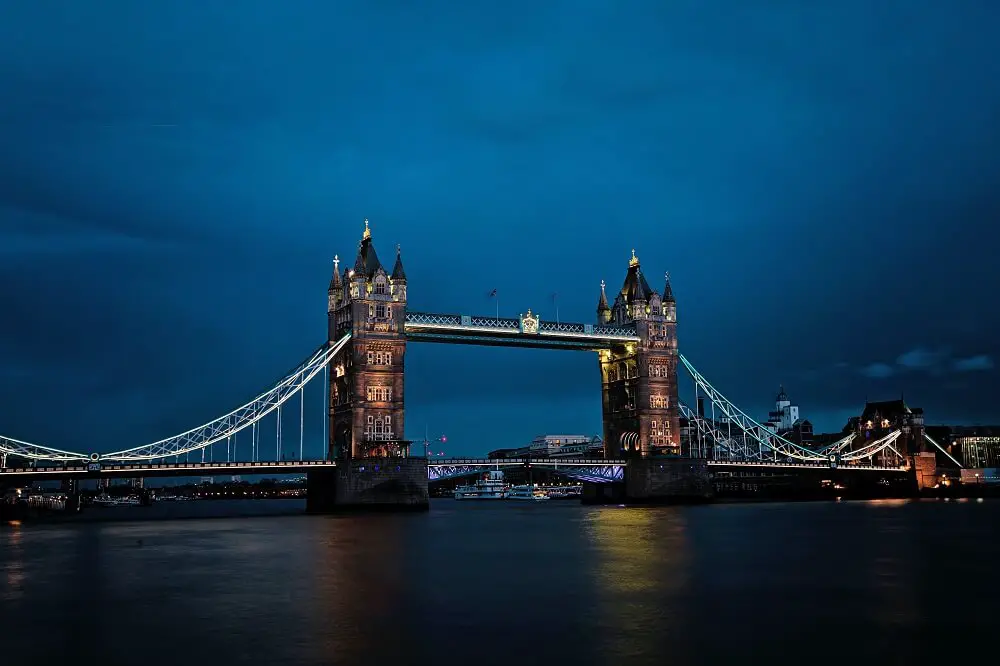
Bridge Type: Bascule/Suspension
Location: London, England
Completion: 1894
First on our list of 10 spectacular bridges that open for boats is surely the most famous of them all: Tower Bridge in London, England. This architectural marvel, constructed between 1886 and 1894, lies at the heart of the city, and allows for the seamless movement of both land and water-based traffic.
It does this thanks to its central bascules that rise up should a tall ship need to pass through it. These bascules are accompanied at either end of the bridge by two 213 foot high towers, which have high level walkways.
The intriguing architectural design of Tower Bridge was proposed by famed 19th Century architect Horace Jones, and delivered with the help of John Wolfe Barry and Henry Marc Brunel’s engineering prowess. It was built in the hope of boosting the East End of London’s commercial opportunities.
Sometimes confused with its upstream counterpart, London Bridge, Tower Bridge’s prominence has meant it has become emblematic of the British capital as a whole. And, with a staggering 40,000 daily crossings, it is equally important as a practical conduit for commuters and explorers going across the River Thames.
2. Bataan-Corregidor Memorial Bridge
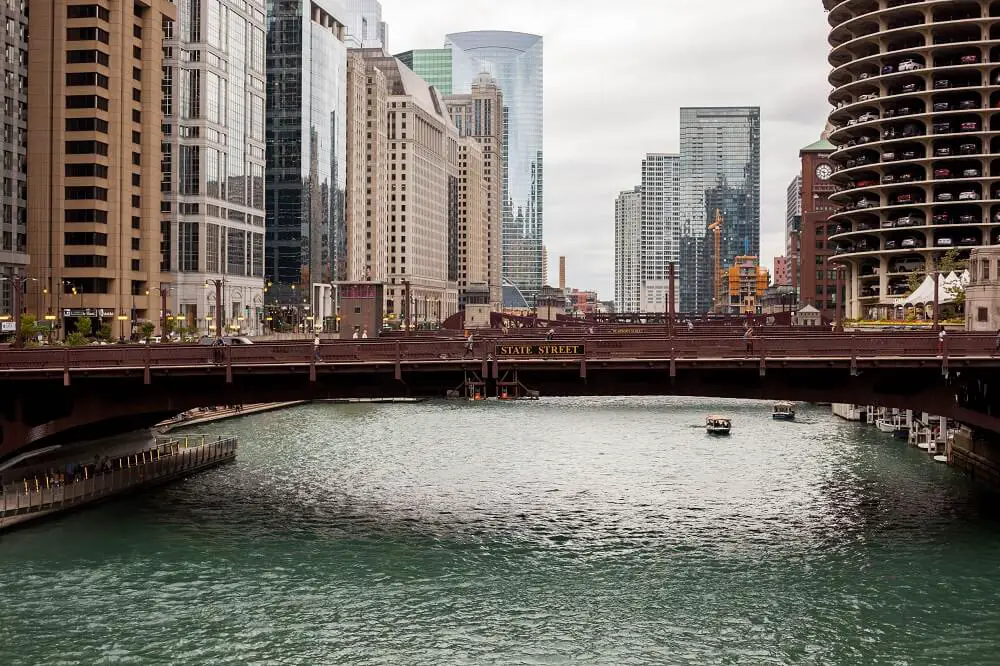
Bridge Type: Bascule
Location: Chicago, USA
Completion: 1949
In the heart of downtown Chicago, the Bataan-Corregidor Memorial Bridge, otherwise known as the State Street Bridge, spans the iconic Chicago River.
The bridge’s legacy dates back to 1939 when its construction commenced, although it did not finish until 1949. This is due to the impact of World War II, which brought forth material shortages that caused a delay for the project.
Notably, the State Street Bridge showcases a distinct ‘railing height truss’ design, which features a raised deck truss, creating a visual illusion resembling a pony truss. This situates the top chord above the deck, serving as both a guardrail and an enhancement to the bridge’s aesthetics.
Since its opening, the State Street Bridge has allowed Chicagoans to move freely across its major waterway. However, the structure also encapsulates history, design innovation, and the resolute spirit of a city that refuses to be defined by challenges.
3. Puente de la Mujer
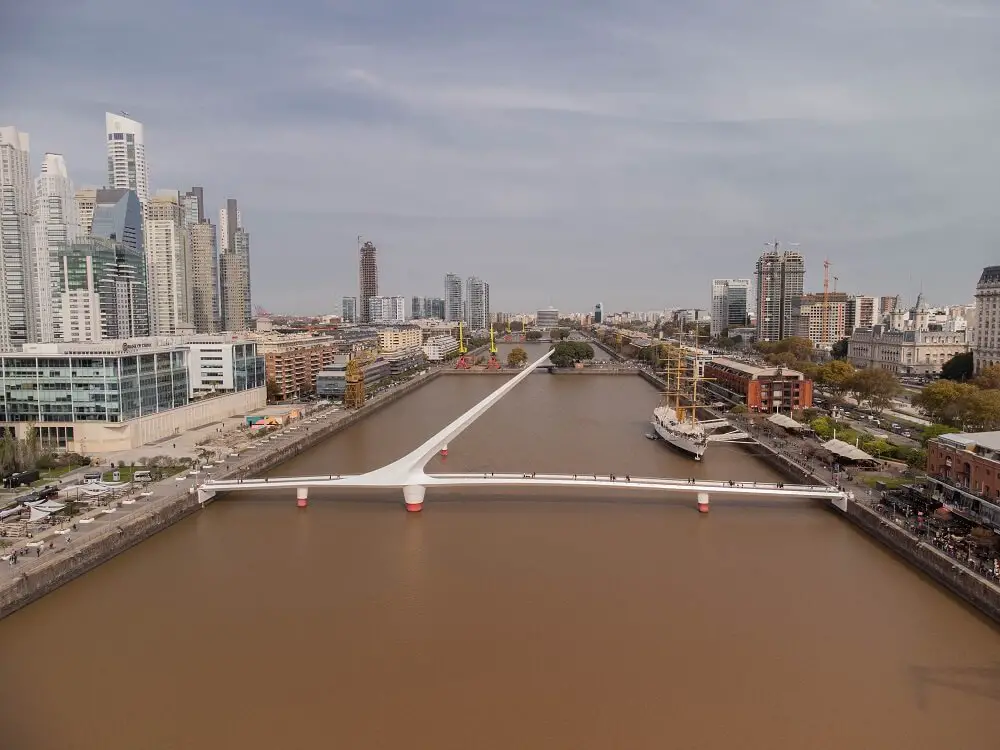
Bridge Type: Swing bridge
Location: Buenos Aires, Argentina
Completion: 2001
Located in Buenos Aires’ Puerto Madero commercial district, the Puente de la Mujer, translating to ‘Woman’s Bridge’, is a spectacular swing bridge that opens for boats. The rotating footbridge was designed by the visionary Spanish architect and structural engineer Santiago Calatrava, to be completed in 2001.
The Puente de la Mujer is a cantilever spar cable-stayed bridge with a single mast that suspends cables leading to the ground. This allows a portion of the bridge to rotate 90 degrees, yielding to water traffic.
Spanning 170 metres and weighing 800 tonnes, the Puente de la Mujer is a true spectacle of ingenuity. Its design echoes Calatrava’s earlier works, like the Guadalquivir River bridge in Seville and the Sacramento River bridge in Redding.
In a district that is known for streets bearing women’s names, the bridge’s name, Puente de la Mujer is a nod to feminine spirit. In a wider sense, it has become a tribute to the essence of Buenos Aires and the intertwining worlds of movement, design, and culture.
4. Hörn Bridge
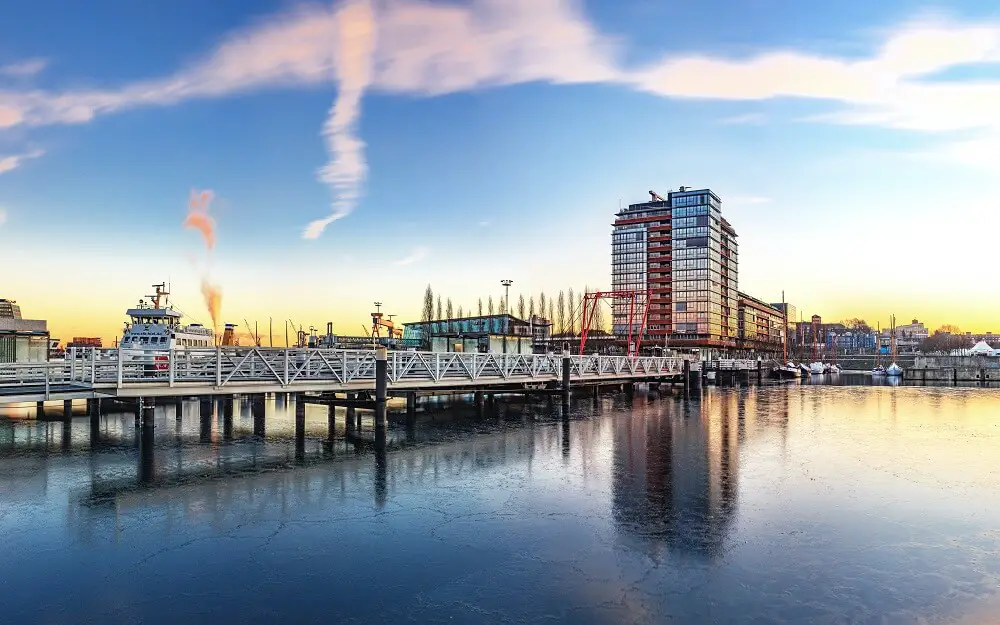
Bridge Type: Bascule
Location: Kiel, Germany
Completion: 1997
The Hörn Bridge, or Hörnbrücke in German, is a bascule bridge nestled in the enchanting city of Kiel, within the state of Schleswig-Holstein. This folding bridge spans the end of the Kiel Fjord, aptly named Hörn, and features a distinctive design that captures the eye.
This three-segment bridge features a main span of 25.5 metres, which, as a boat approaches, curves into the shape of the letter ‘N’. Conceived in 1997, its construction bore the cost of 16 million Deutschmarks.
Despite initial scepticism and some malfunctions upon opening, the Hörn Bridge eventually gained recognition as a big architectural achievement. Not only this, it garnered a reputation as boasting one of the most breathtaking panoramic views of Kiel.
Today, it forms a vital link between the city centre on the western bank of Hörn, and the Gaarden quarter on its eastern counterpart. It also plays a crucial role in facilitating passage between the Norway Ferry Terminal and the main railway station, an artery connecting the city to the world.
5. Johnson Street Bridge
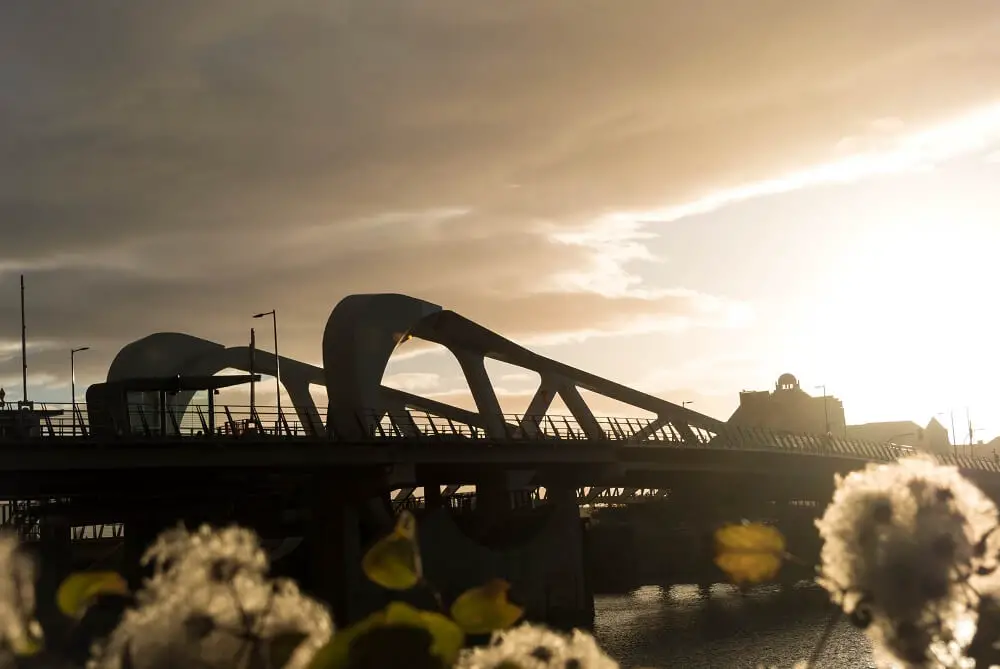
Bridge Type: Bascule
Location: Victoria, Canada
Completion: 2018
Next on our list of bridges that open for boats is Johnson Street Bridge, located in the city of Victoria, Canada. This visually striking bascule bridge connects the Inner Harbour with the Upper Harbour of the city.
Explore our related articles:
Bridge vs Causeway: What is the Difference?Why are there Red Lights on Top of Tall Buildings?
Why are Bridges Covered?
Johnson Street Bridge represents Canada’s largest single-leaf bascule bridge, and stretches across a vast span of 46 metres. Its construction journey began in 2013, culminating in its grand opening on March 31, 2018.
The bridge offers a three-lane roadway, accompanied by a pedestrian walkway on its southern flank and a multi-use pathway on its northern side. As such, it has become a crucial source of vehicular and pedestrian-based connectivity for the citizens of Victoria.
6. Samuel Beckett Bridge
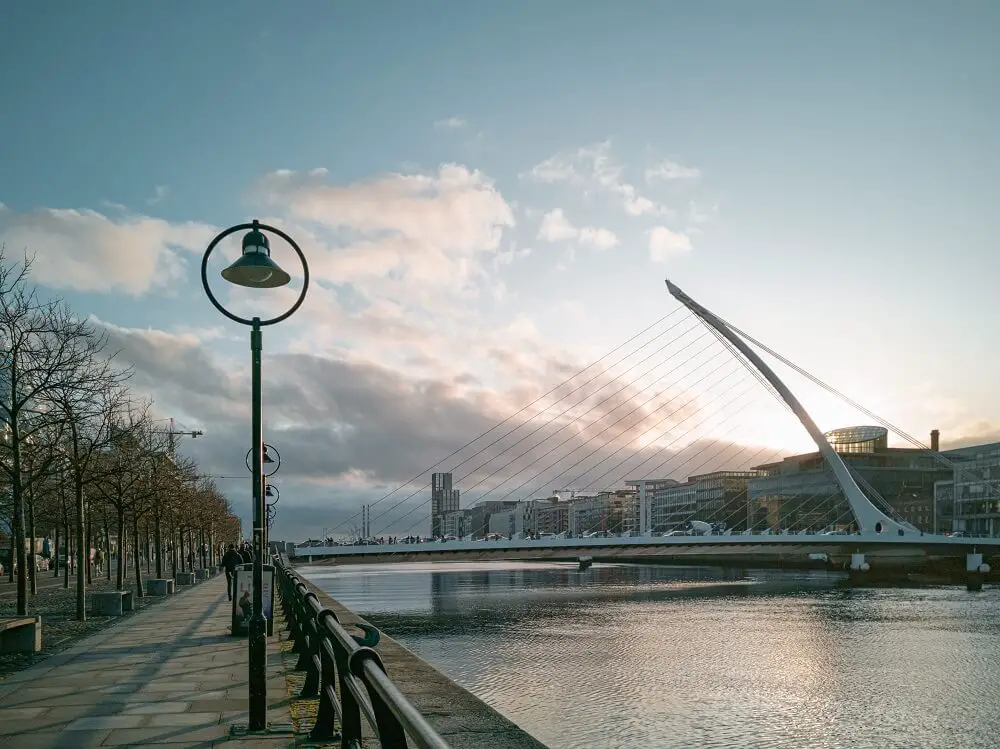
Bridge Type: Swing bridge
Location: Dublin, Ireland
Completion: 2009
Dublin’s mesmerising cable-stayed swing bridge Samuel Beckett Bridge is another amazing bridge that opens for boats. It links Sir John Rogerson’s Quay on the south side of the River Liffey with Guild Street and North Wall Quay in the vibrant Docklands area.
Like the afore-mentioned Puente de la Mujer, the design was created by visionary architect Santiago Calatrava, who was also the brains behind the James Joyce Bridge slightly further upstream.
The Samuel Beckett Bridge is anchored by a doubly back-stayed single forward arc tubular tapered spar, with the bridge’s main span suspended by 31 cable stays. This structural design enables the bridge to swing open to an impressive 90-degree angle, allowing ships to glide through.
Not only that, the bridge, which is named after Irish literary icon Samuel Beckett, forms tribute to Ireland’s rich cultural heritage with its harp-like appearance. This symbol, etched into Ireland’s history since the thirteenth century, finds new life in the architecture of the bridge.
7. Pegasus Bridge
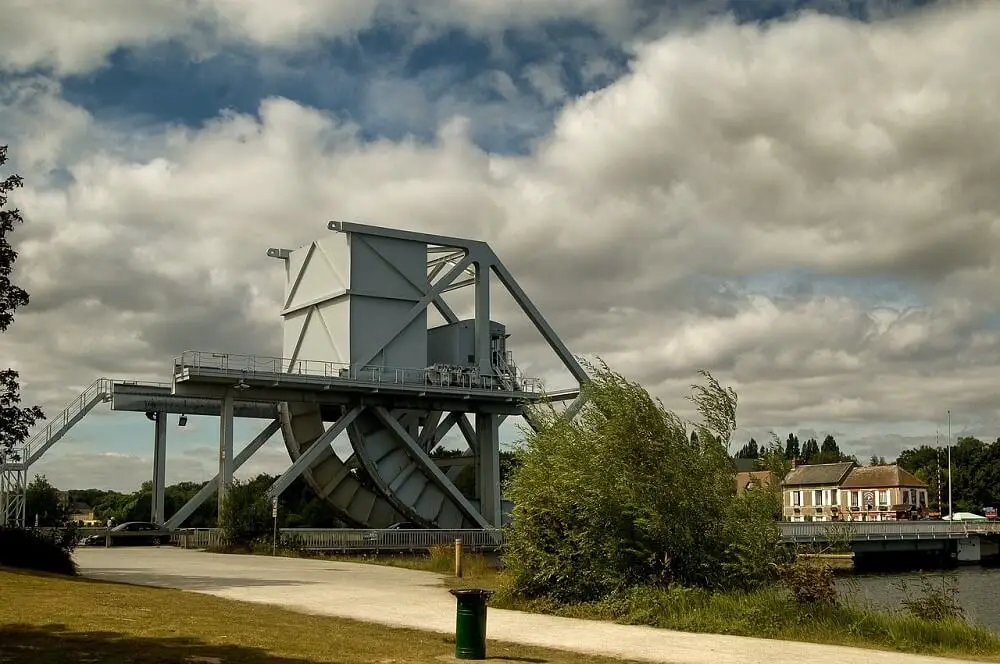
Bridge Type: Bascule
Location: Bénouville, France
Completion: 1934
When it comes to historically significant movable bridges, they don’t come much more important than Pegasus Bridge in Normandy, France. Originally known as the Bénouville Bridge after its neighbouring village, this road crossing spans the Caen Canal, and is a major link between Caen and Ouistreham.
Pegasus Bridge is famously known as one of the first objectives of the D Day landings, in which a British glider-borne force captured and secured the bridge in order to thwart potential German counter attacks. This audacious operation played a pivotal role in ensuring the success of the Allied invasion of Normandy.
While the original 1934-built bridge was replaced by a more modern bascule bridge in 1996, the site has since been turned into a war memorial. It was also renamed to Pegasus Bridge, paying homage to the emblem worn by British airborne forces of I Airborne Corps.
In technical terms, the design of both the original Pegasus Bridge and its 1994 successor is termed as a ‘Scherzer rolling lift bascule bridge’. Unlike conventional bascule bridges, these structures don’t use traditional pivots, instead using curved tread plates attached to the main span’s girders. This innovative design elevates the clearance over the waterway.
8. Erasmusbrug
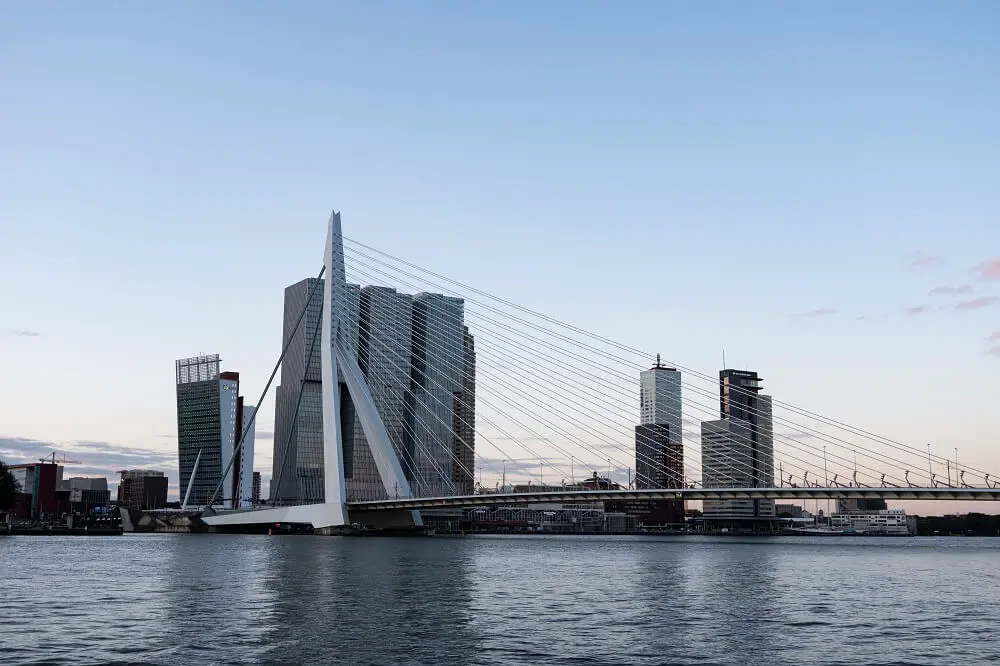
Bridge Type: Bascule
Location: Rotterdam, Netherlands
Completion: 1996
Standing out boldly on the skyline of the Dutch city of Rotterdam, the Erasmusbrug is one of the world’s most visually spectacular bridges. This striking bridge spans the 802 metre width of the Nieuwe Maas River, connecting the northern and southern sides of the city.
The Erasmusbrug combines cable-stayed and bascule elements, and incorporates an imposing asymmetrical pale blue pylon. This single pylon, soaring 139 metres high, lends the bridge its poetic moniker: ‘The Swan’.
Another of the bridge’s most distinctive features is its southernmost span, which incorporates an 89-metre-long bascule bridge, which is designed to accommodate ships that cannot pass beneath the bridge. This bascule bridge is the largest and heaviest of its kind in Western Europe.
With a construction cost of €165 million, the bridge was inaugurated in 1996, and was officially named in honour of Desiderius Erasmus, who was the influential scholar known as Erasmus of Rotterdam. It was conceptualised by the visionary Dutch architect Ben van Berkel, and continues to be used by thousands of pedestrians, cyclists and vehicles every day.
9. Palace Bridge
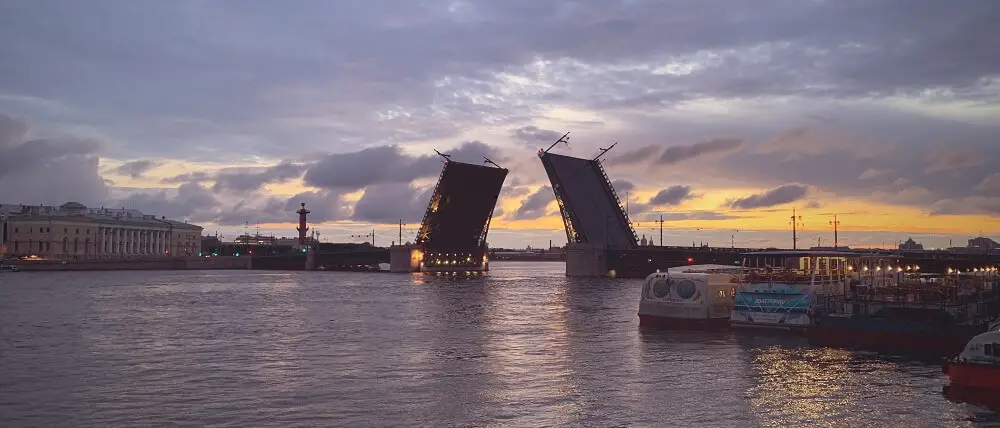
Bridge Type: Bascule
Location: Saint Petersburg, Russia
Completion: 1916
Palace Bridge in Saint Petersburg, Russia, is another stunning movable bridge that wows visitors and locals alike. As the name suggests, this bridge stands close to Palace Square in the centre of the city, and links it with Vasilievsky Island.
During the day, this bascule bridge accommodates both road and foot traffic. However, as with many of the other Neva River crossings, this isn’t possible at night as the bascules are drawn, rendering any crossings impossible.
Palace Bridge’s construction began in 1912, led by esteemed French firm Société de Construction des Batignolles. It has impressive dimensions, measuring 260.1 metres in length and 27.8 metres in width, with its elegant cast-iron framework being crafted based on designs by Andrey Pshenitsky.
Despite the turmoil of World War I, the bridge was unveiled to the public on December 23, 1916, a culmination of persistent effort and meticulous planning. Interestingly, each facet of the plans were scrupulously examined to ensure the bridge did not obstruct the panoramic view from Palace Embankment towards any of the local landmarks.
10. Gateshead Millennium Bridge
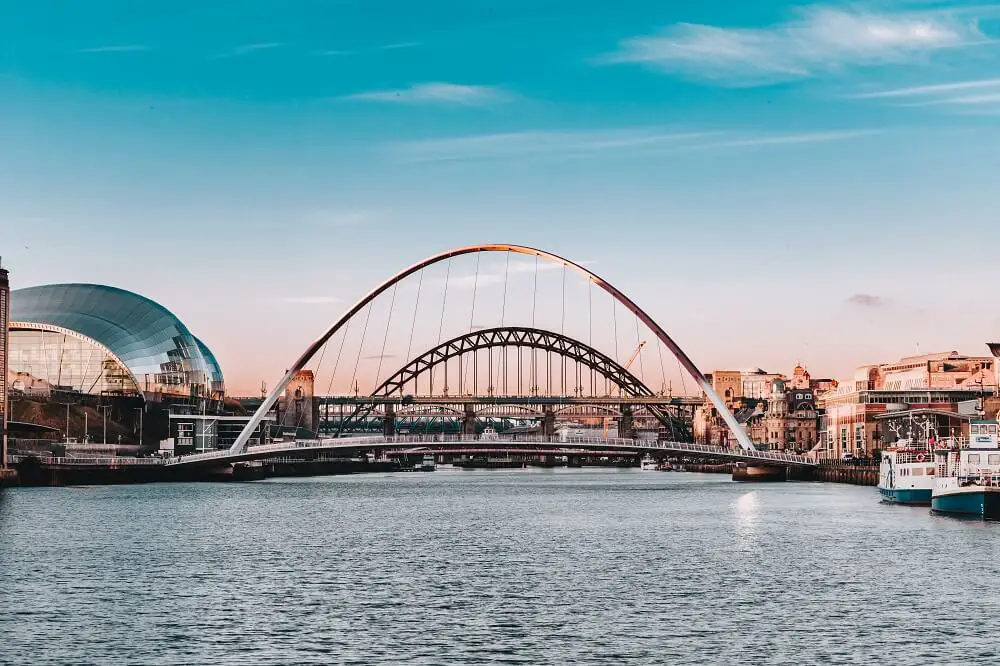
Bridge Type: Tilt Bridge
Location: Newcastle, England
Completion: 2001
Last but not least on our list of amazing bridges that open for boats is the Gateshead Millennium Bridge in Gateshead, England. Carving a graceful path across the River Tyne, this pedestrian and cyclist tilt bridge unites the vibrant Gateshead arts quarter on the southern bank with the centre of Newcastle upon Tyne on the North.
Gateshead Millennium Bridge is notable for its world-first tilting bridge design, which raises the curved path upwards into the air. Unveiled to the public in 2001, its construction was a result of a collaboration between architectural practice WilkinsonEyre and renowned structural engineering firm Gifford.
Affectionately referred to as the ‘Blinking Eye Bridge’ or the ‘Winking Eye Bridge’, its distinctive shape and unique design have given it wide renown in the local area. While it shares the Tyne’s waters with historical predecessors like the Tyne Bridge, it stands on its own as a contemporary masterpiece.
How deep do bridges have to be for ships to pass under them?
The depth of bridges is not a primary consideration for ships to pass under them. Instead, the critical factor is the vertical clearance or height above sea level that the bridge provides. In particular, the shipmaster needs to know the height of the vessel’s superstructure at various load levels to ensure it can safely pass underneath the bridge without any damage to the ship or the bridge itself.
The height clearance required for ships to safely pass under a bridge depends on the size and structure of the vessels that frequent the waterway. Navigational authorities and bridge designers take into account the typical size of ships passing through a particular waterway when determining the height clearance for a bridge.
In some cases, particularly in busy waterways with large commercial vessels, bridges might be constructed with high clearance to accommodate larger ships. On the other hand, in areas with smaller boats or recreational vessels, the height clearance may be lower.
Thanks for reading our handy guide to amazing bridges that open for boats. Like no other structures, they allow for the seamless integration of land and water based traffic, making them incredibly valuable.
Want to know more about the structures that help the world go round? If so, take a look at some more of our infrastructure articles. They include a guide to why bridges are covered.
Or, if you’d like more definitions on building and architecture vocabulary, take a look at our range of building wikis.
Last Updated on 14 September 2023 by Michael